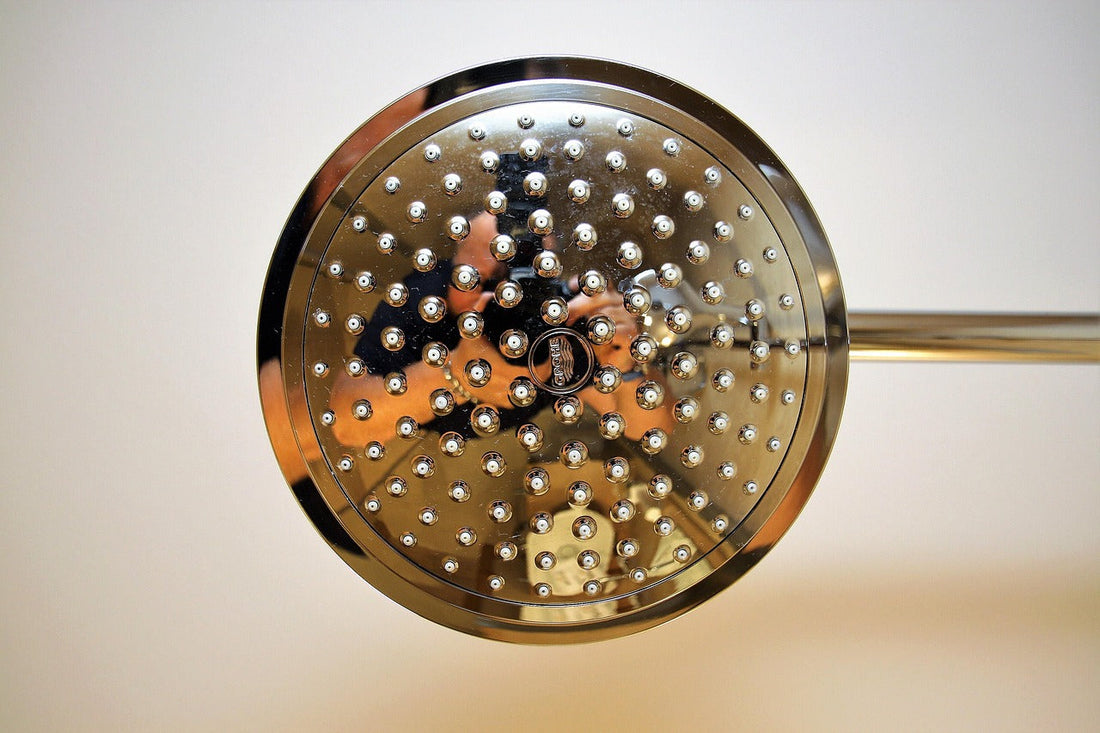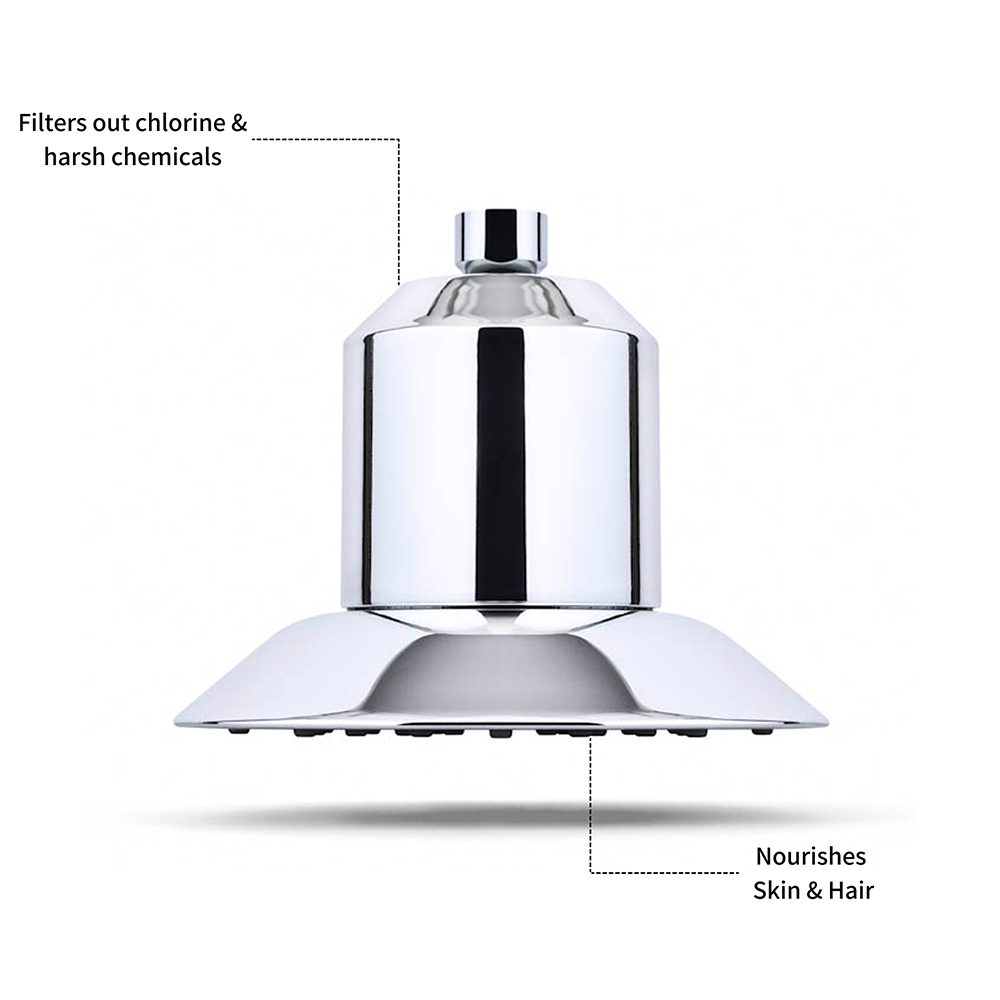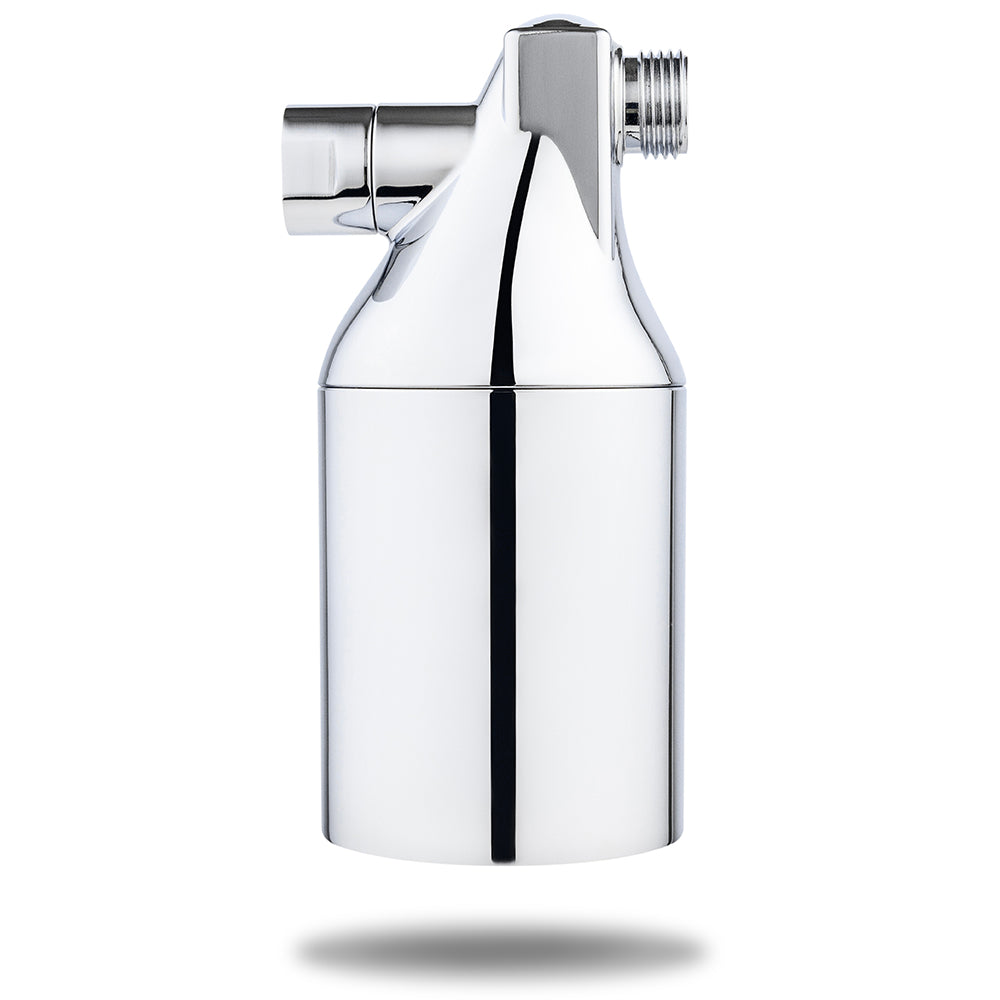
Rain Shower Head vs Regular Shower Head: A Full Comparison
 Paul Souliac
Paul Souliac
Rain shower heads and regular shower heads both get the job done, but they deliver very different experiences. If you're tired of hard water ruining your skin and hair, a rain shower head might feel like a spa escape with its gentle, wide flow that mimics natural rainfall. Regular shower heads, on the other hand, offer strong pressure for quick rinses. At Afina, we specialize in filtered shower heads that remove chlorine and metals, making any type better for your health. Whether you pick a rainfall style or standard one, adding filtration boosts benefits.
Check our shower filter options to pair with either. For easy swaps, explore our replacement filters too. This guide breaks down differences, pros, cons, and data to help you decide.
What Defines a Rain Shower Head?
A rain shower head stands out with its large size, often 8 to 20 inches wide. It mounts on the ceiling or high on the wall with an extended arm. Water falls straight down in soft droplets, like standing in light rain. This setup covers your whole body at once. Many models add features like adjustable settings or LED lights. But size matters – it needs space to avoid splashes outside the stall.
People love them for relaxation. The flow feels gentle on skin. Yet, pressure stays low, around 1.75 to 2.5 gallons per minute (GPM) in efficient 2025 models. If you want full coverage without harsh sprays, this fits. Pair it with our Afina filtered shower head to cut contaminants while enjoying the rain effect. Read real user reviews for insights.
What Makes a Regular Shower Head Different?
Regular shower heads are compact, usually 3 to 6 inches wide. They mount on the wall and spray water at an angle. You get options like fixed or handheld styles with hoses for flexibility. Pressure runs higher, often 2.0 to 2.5 GPM, for fast cleaning. Many have multiple spray patterns, from massage to mist.
This type suits quick showers. It's easy to aim water where needed, like rinsing hair. Low cost and simple setup make it popular. Add filtration with our shower filter to protect against dry skin. Browse our full shop collection for compatible picks.
Key Differences in Design and Functionality
Rain and regular shower heads differ most in flow and coverage. Rain models spread water wide for even soaking, but with softer pressure. Regular ones focus streams for targeted rinsing, feeling stronger.
Installation varies too. Rain heads often need ceiling pipes, while regulars screw on easily. Size impacts fit – rain needs taller ceilings, at least 7 feet for comfort. Regulars work in tight spaces.
Function-wise, rain offers a calm vibe, ideal for unwinding. Regulars excel at efficiency, saving time. Both can be water-smart in 2025 versions. For health boosts, integrate our filtered options into either design.
Pros and Cons of Rain Shower Heads
Rain shower heads bring luxury, but weigh the ups and downs.
Pros:
- Wide coverage soaks your body fully, cutting rinse time.
- Gentle flow relaxes muscles and feels spa-like.
- Modern look upgrades bathroom style.
- Some 2025 models save water with aerators.
Cons:
- Lower pressure makes rinsing thick hair tough.
- Higher upfront cost, from $100 to $500+.
- Uses more water if not low-flow, up to 2.5 GPM.
- Harder to clean due to height.
If pressure bothers you, add our shower filter for better flow without clogs. See reviews from users who switched.
Pros and Cons of Regular Shower Heads
Regular shower heads keep things simple and reliable.
Pros:
- Strong pressure rinses soap fast.
- Affordable, starting at $20.
- Easy install, often DIY.
- Versatile with handheld options for kids or pets.
Cons:
- Limited coverage means moving around more.
- Can feel harsh on sensitive skin.
- Basic designs lack wow factor.
- Prone to mineral buildup without filters.
Enhance yours with our replacement filter for softer water. Explore the shop for upgrades.
Water Usage and Efficiency Face-Off
Water use matters for bills and the planet. Regular shower heads average 2.1 GPM in 2025 efficient models, per EPA standards.
Rain heads match at 1.75 to 2.5 GPM but feel less forceful, so showers might last longer. An 8-minute shower with a regular head uses about 16.8 gallons. Rain could hit 20 gallons if you linger for the feel. Low-flow versions of both save big – a family cuts 2,700 gallons yearly with WaterSense labels.
Filtration helps efficiency by preventing clogs. Try our filtered shower head to maintain steady flow.
|
Feature |
Rain Shower Head |
Regular Shower Head |
|
Average GPM (2025 models) |
1.75-2.5 |
2.0-2.5 |
|
Water per 8-min shower |
14-20 gallons |
16-20 gallons |
|
Annual family savings with low-flow |
Up to 2,700 gallons |
Up to 2,700 gallons |
|
Energy savings (hot water) |
330 kWh/year |
330 kWh/year |
Data from EPA and Consumer Reports shows efficient rain heads now rival regulars in savings.
Installation and Cost Breakdown
Installing a regular shower head takes minutes – unscrew the old, attach the new. Costs run $20 to $100.
Rain heads demand more. Ceiling mounts need new pipes, costing $200 to $800 with a plumber. Wall versions are easier at $50 to $300.
Factor maintenance: Replace filters every 3-6 months. Our replacement filter keeps costs low. View user feedback on easy setups.
Health and Comfort Impacts
Rain heads ease stress with soft flows, great for sore muscles. But low pressure might not rinse well for long hair.
Regulars provide massage-like sprays for better circulation. Harsh water? Both benefit from filters removing chlorine, reducing skin irritation.
2025 studies show filtered showers cut dandruff by 50% and improve hydration.
Our shower filter targets these issues.
Choosing Based on Your Needs
Pick rain if you crave relaxation and have space. Go regular for speed and savings in small baths. Test pressure first – under 40 PSI? Boosters help rain heads. Families with kids might prefer handheld regulars. Upgrade today with our filtered collection for the best of both.
2025 Trends and Data Insights
In 2025, 45% of new baths include rain heads, up from 30% in 2023, per Houzz surveys. 52 Water efficiency improved, with top models at 1.5 GPM. Consumer Reports rates rain heads high for luxury but notes 20% users miss pressure. 5 Filtered versions grew 15%, aiding skin health. Energy savings hit 330 kWh yearly for low-flow, enough for 11 home days.
Ready to refresh? Shop Afina filtered shower heads for clean, efficient showers.
FAQ
How does water pressure compare in rain shower heads vs regular ones?
Rain shower heads often have lower perceived pressure due to wider spread, even at the same 2.0 GPM flow. Regular heads feel stronger with focused streams. For better results, choose models with adjustable settings or add a filter to avoid clogs from minerals.
Can I install a rain shower head in a small bathroom?
Yes, but check ceiling height – need at least 7 feet for comfort. Wall-mounted rain heads save space over ceiling ones. If tight, stick to regulars for easier fit and less splash.
What are the latest water-saving features in 2025 shower heads?
Many now use aerators mixing air with water, cutting use to 1.75 GPM without losing feel. Filtered models prevent buildup for steady efficiency. EPA-certified ones save families thousands of gallons yearly.
Do filtered shower heads work with both rain and regular types?
Absolutely, filters attach to most heads, removing chlorine for healthier skin. They maintain pressure longer by reducing clogs. Replace every few months for best performance.
Which shower head type is better for families?
Regular handheld ones offer flexibility for kids and quick rinses. Rain heads suit adults seeking calm but might frustrate with low pressure. Combine both in a dual setup for versatility.
Shop our filtered shower heads today for safer baths.






